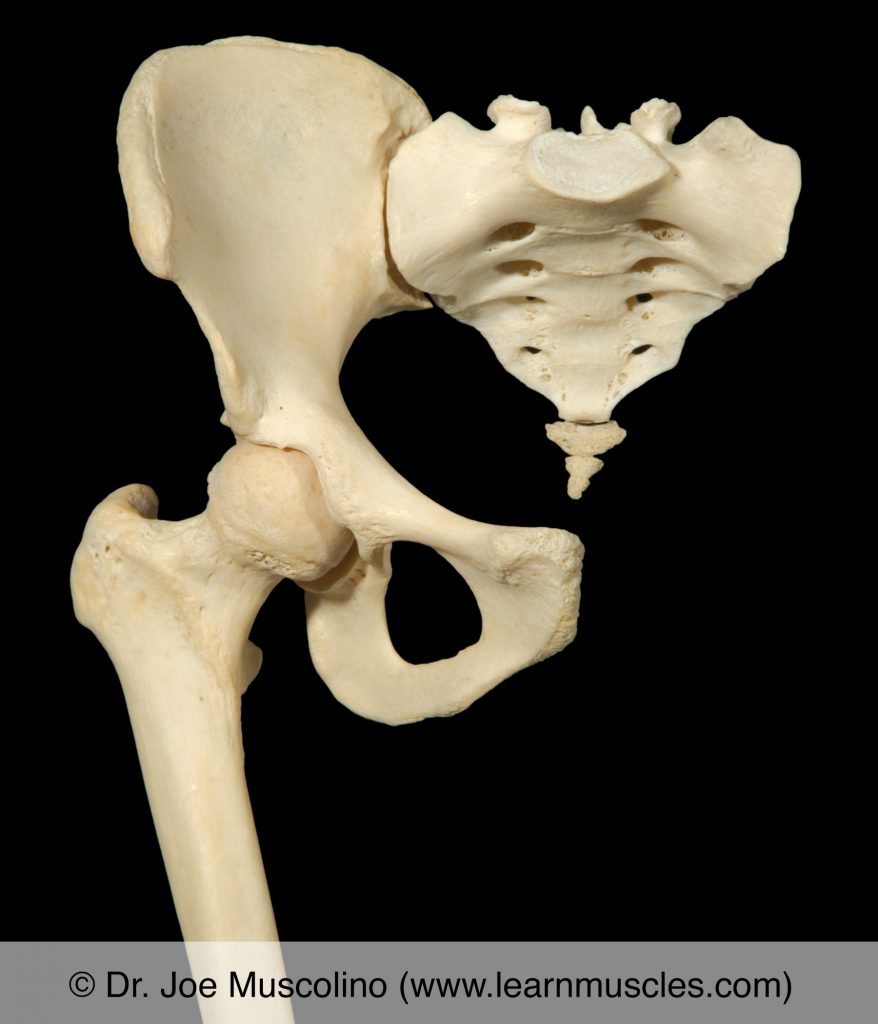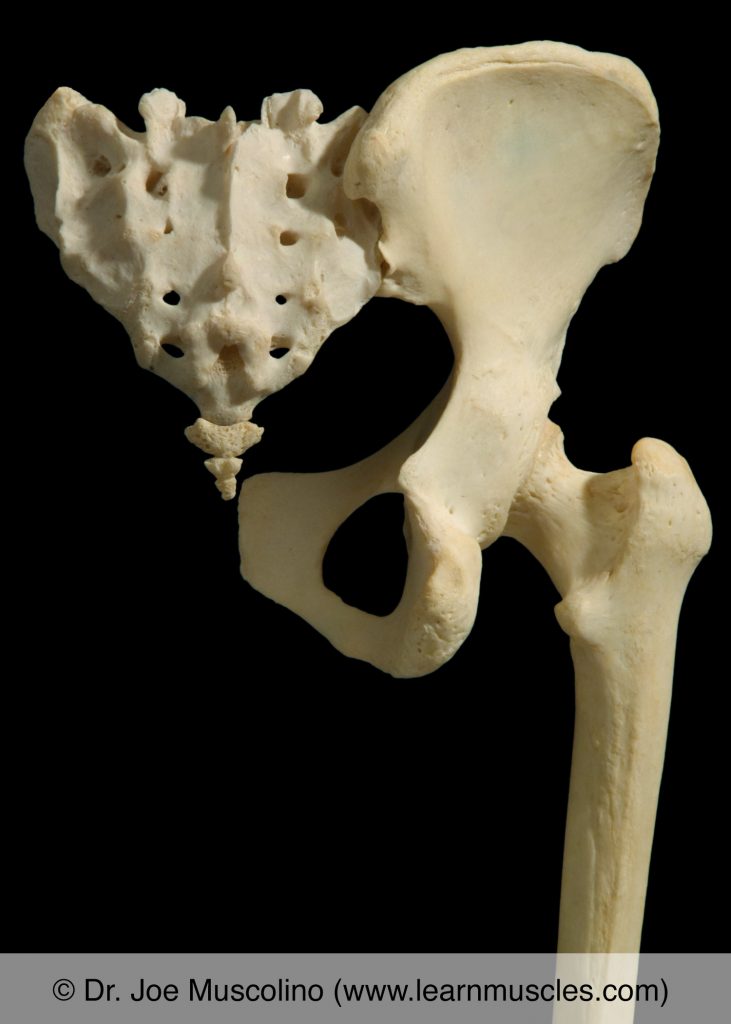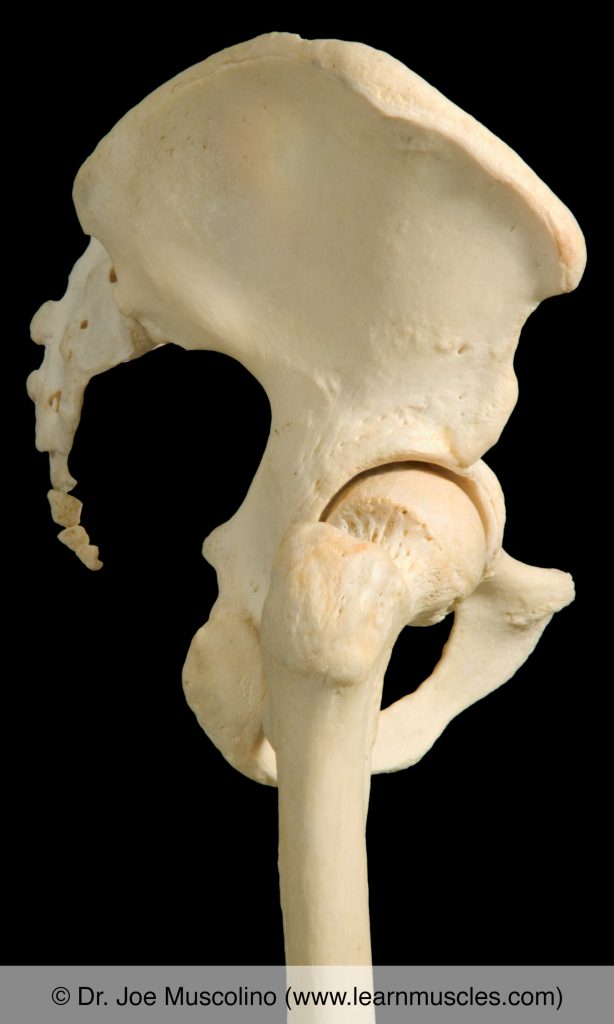- The hip joint, also known as the femoroacetabular joint, is a synovial triaxial (polyaxial) joint.
- It is formed by the head of the femur meeting the acetabulum of the pelvic bone.
- It allows motion in all three cardinal planes:
- flexion/extension in the sagittal plane.
- anterior tilt / posterior tilt of the pelvis in the sagittal plane.
- abduction/adduction in the frontal (coronal) plane.
- depression/elevation of the pelvis in the frontal plane
- lateral rotation/medial rotation (external/internal rotation) in the transverse (horizontal) plane.
- contralateral rotation / ipsilateral rotation of the pelvis in the transverse plane.
- flexion/extension in the sagittal plane.
NOTES:
- When the femur moves at the hip joint, there is a coupled action of movement of the pelvis (at the sacroiliac and lumbosacral joints). This coupling of joint actions is called femoropelvic rhythm.
- With femoropelvic rhythm, when the pelvis moves, there will be compensatory movement of the spine.
- The reverse closed-chain joint actions of the pelvis at the hip joint are likely just as important as the standard open-chain joint actions of the thigh/femur at the hip joint.

Anterior view of the hip joint on the right side of the body.

Posterior view of the hip joint on the right side of the body.

Lateral view of the hip joint on the right side of the body.
